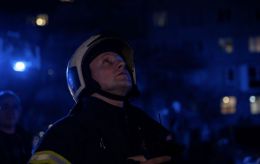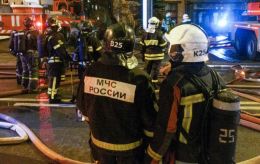Protracted war? What could happen at Ukraine front in 2024
 Photo: Experts analyze what could happen at the front in 2024 (Getty Images)
Photo: Experts analyze what could happen at the front in 2024 (Getty Images)
With a high probability, the war in Ukraine will not end in 2023. However, the positions that the Defense Forces will hold by the end of December will determine the starting conditions for a new phase and how events will unfold in the following year.
This is discussed in the RBC-Ukraine article titled "Protracted war or victory? What scenarios most likely for Ukraine in 2024."
Weather factor
According to Western and Ukrainian military analysts, the deteriorating weather conditions leave only a small window of opportunity for conducting combat operations by the end of this year.
Currently, Ukrainian brigades are operating with small infantry groups, and weather conditions do not pose a significant obstacle for them. However, to advance rapidly, it is necessary to deploy armored vehicles, for which the fall-winter terrain could become problematic.
Therefore, experts believe that weather conditions will objectively complicate and slow down the progress of Ukrainian forces. They have approximately a month for active combat before heavy rains, snow, and freezing temperatures set in.
Goals to achieve by the end of the year
Most often, the military talks about the liberation of Tokmak in the south and/or Bakhmut in the east. President Volodymyr Zelenskyy has also mentioned plans to liberate "Bakhmut and two other cities," likely referring to these goals by the end of this year.
Enemy's intentions
At the same time, Russian forces have not made significant breakthroughs. The enemy has essentially not achieved results in their attempts to advance in the Kupiansk and Lyman directions. The Russians are still defending effectively.
The current plan of the Russian command looks like this: the maximum task is to occupy the entire territory of the Luhansk region, aligning the front line along the Oskil River and thus creating conditions for further capture of the entire Donbas.
The minimum task is to divert Ukrainian reserves from Bakhmut and the south with their active actions in the Kharkiv and Luhansk regions.
The Kremlin's intentions to continue the war are evidenced by two facts: Moscow has decided to increase defense and military spending. In 2024, they will constitute 40% of their budget. Furthermore, the Russian Ministry of Defense has announced plans to achieve the goals of "special military operation" (a euphemism used by the Russian government and propagandists to describe the war) next year.
Ukraine's advance will not stop
Representatives of the Ukrainian government state that the advance of the Defense Forces will not stop in the fall or winter, as long as all occupied territories are not liberated.
Three war scenarios in 2024
Optimistic scenario: The Ukrainian army liberates the entire south, including Crimea, by the middle of the next year and starts the de-occupation of the east in the second half of the year.
Moderate or intermediate scenario: Ukrainian defense forces reaching the shores of the Azov Sea in the first half of 2024 and commencing the de-occupation of Crimea in the second half, followed by Donetsk and Luhansk regions.
Worst scenario: The Ukrainian army fails to shift the front line, and the war turns into positional battles for each village.
All of these scenarios include a high probability that the war will drag on into 2025. As military expert Serhii Hrabskyi commented to RBC-Ukraine, "Overall, 2024 does not look like the final year of our victory."
What the military-political leadership says about the war's timing
President Volodymyr Zelenskyy recently stated in an interview that Ukraine is at the final stage of the war, but it could be the most challenging.
However, the experts interviewed by RBC-Ukraine differ in their opinions about the actual stage of the war.
Kyrylo Budanov, the head of Ukraine's intelligence, says that, based on an economic assessment, Russia is capable of waging war until 2025. In terms of equipment, it could last until 2026 at most, as the enemy has sufficient human resources for an extended period.

